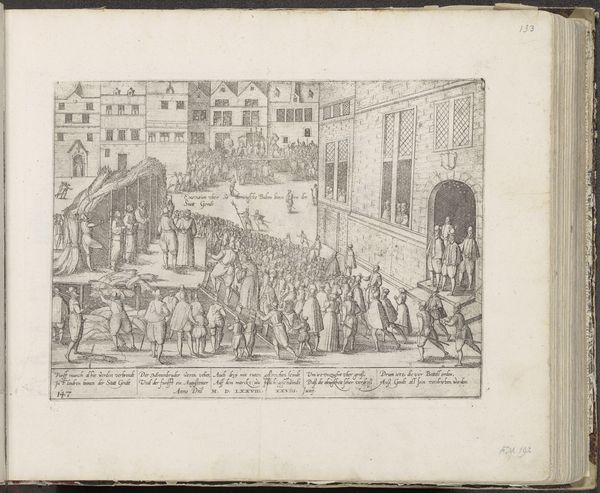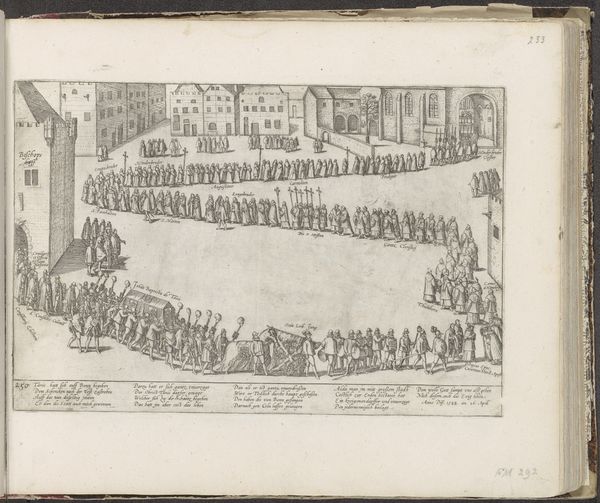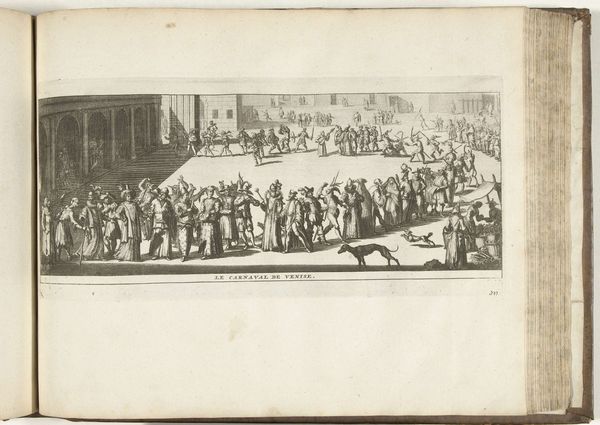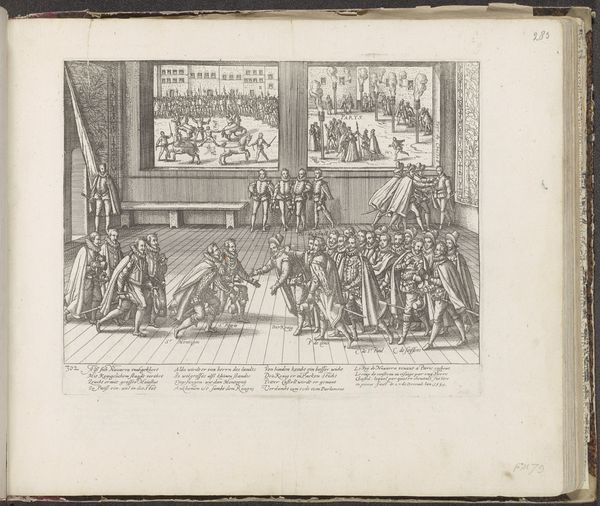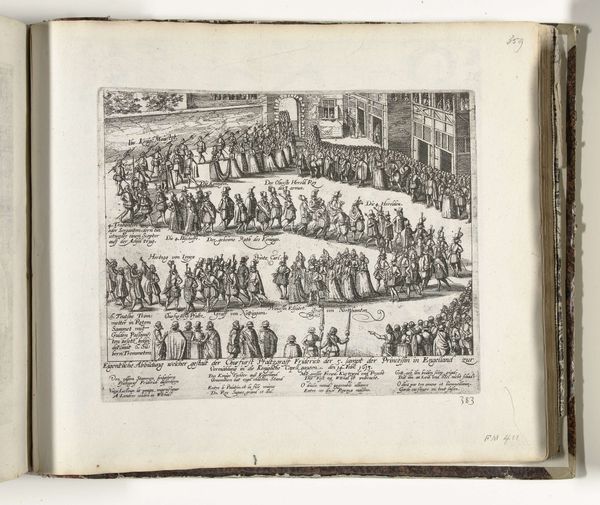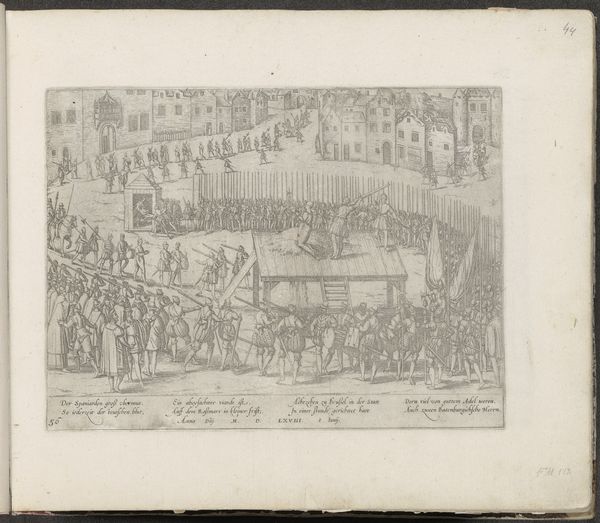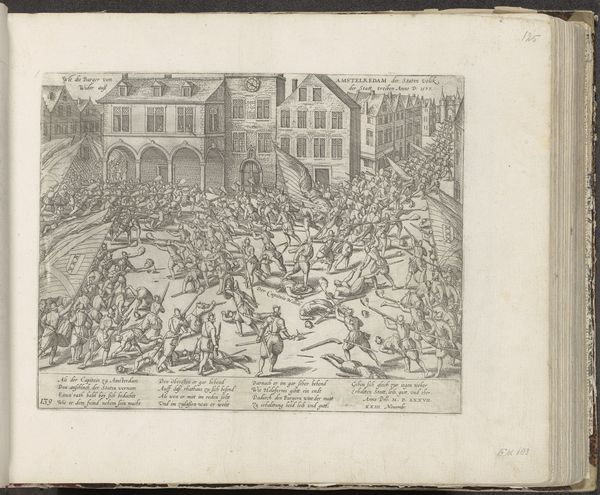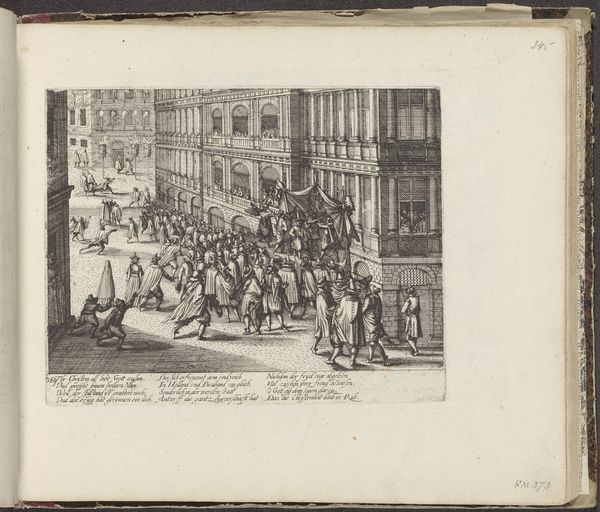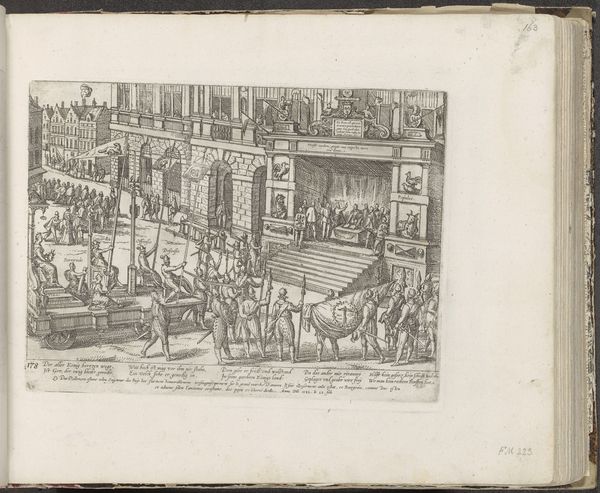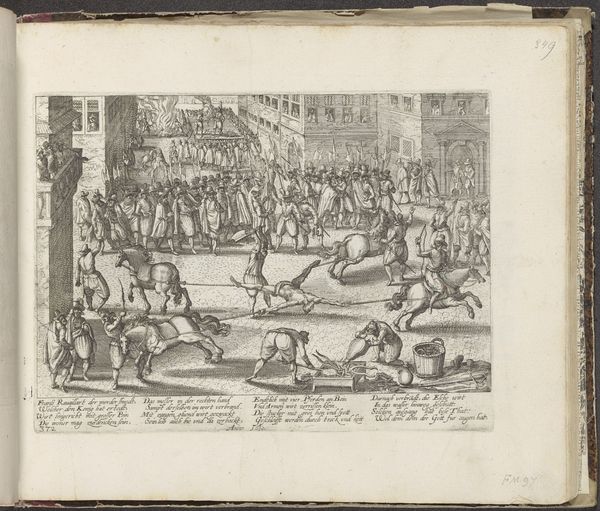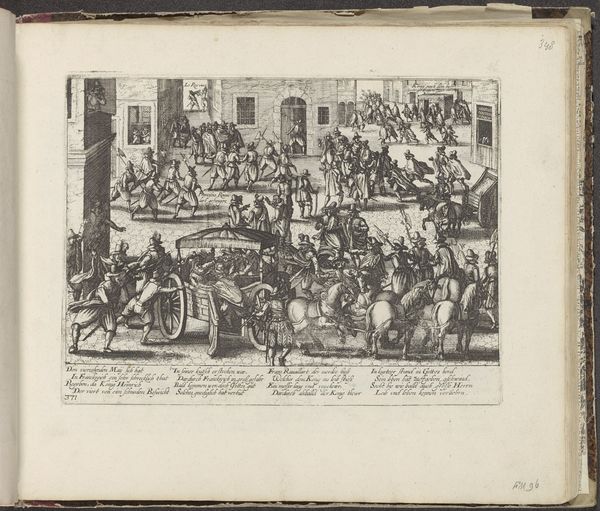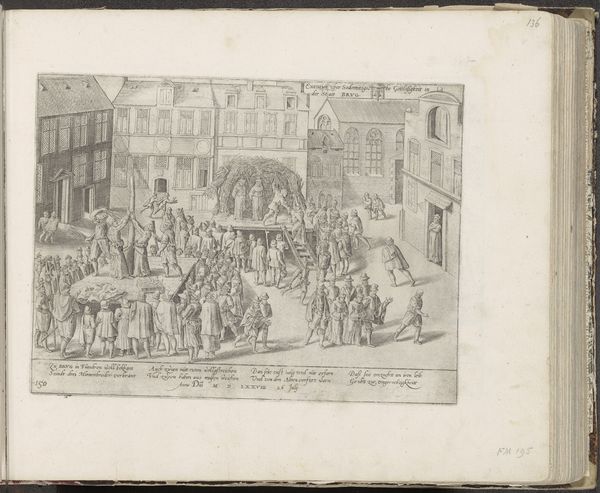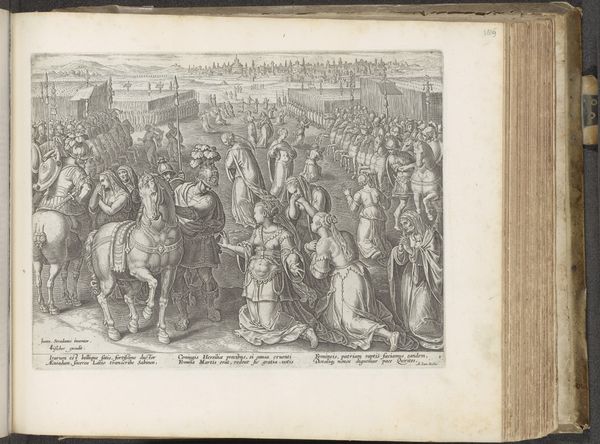
Optocht na de kroning van Ferdinand II tot Rooms koning, 1619 1619 - 1621
0:00
0:00
print, engraving
#
aged paper
#
toned paper
#
baroque
#
ink paper printed
# print
#
old engraving style
#
cityscape
#
history-painting
#
engraving
Dimensions: height 232 mm, width 285 mm
Copyright: Rijks Museum: Open Domain
Editor: Here we have "Optocht na de kroning van Ferdinand II tot Rooms koning, 1619" by Frans Hogenberg, made between 1619 and 1621. It’s an engraving – ink on paper – depicting a procession, full of people. It feels incredibly detailed but also quite dense. What can you tell me about how this image was produced and what was its purpose? Curator: Considering the labor involved in creating this engraving – the skilled hand cutting those fine lines into the metal plate, the physical printing process, and the sheer number of impressions likely produced – it was clearly meant for wide dissemination. How does this production process shape our understanding of the event it depicts? Was it made for the elites in the procession, or for popular consumption and how does the intended consumer dictate choices made in production and design? Editor: So, the choice of engraving and printing implies a broader audience beyond the elite circles directly involved in the coronation? Curator: Precisely. Engravings like this one served as a form of visual news. Think about the social context of early 17th century Europe, riddled with religious and political tensions. How might this mass-produced image function as propaganda, shaping public opinion on Ferdinand II’s reign and, by extension, on the authority of the Holy Roman Empire? Note the detailed depiction of wealth, arms, and grandeur in the printed image – would those things affect consumers in that period? Editor: I see what you mean. It's not just a record; it’s a crafted message, disseminated through a very specific material process to a particular social body. So much to consider around a printed picture. Curator: Indeed, understanding the materials, production, and distribution illuminates how art participated in and reflected the society around it. These considerations make analyzing art so enlightening.
Comments
No comments
Be the first to comment and join the conversation on the ultimate creative platform.
